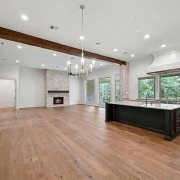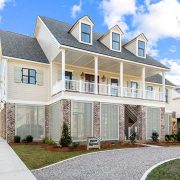After several bruising years of elevated borrowing costs, mortgage rates are finally moving in the right direction for borrowers. The average 30-year fixed rate has slipped to about 6.13%, its lowest level in three years and a notable improvement from the 7% (and higher) territory that dominated 2023 and much of 2024. That shift alone is easing monthly payments enough to put some previously out-of-reach homes back into the conversation for many buyers.
The impact isn’t limited to people still shopping for their first home. Existing homeowners have taken notice too, which is why mortgage applications for both purchases and refinances have jumped whenever rates have dipped. A lower rate doesn’t magically make housing “cheap” again, but it does reduce the cost of carrying a given amount of debt. For buyers and homeowners who ran the numbers earlier this year and walked away discouraged, the current environment at least justifies a second look.
The obvious question now is how much further rates might fall before 2025 ends—and whether it’s worth waiting for that possibility. Markets are currently signaling that the Federal Reserve may not be done cutting interest rates. Futures tied to Fed policy suggest a high probability of at least one more quarter-point cut at the central bank’s October meeting. Because mortgage rates are influenced by expectations for Fed policy, not just the Fed’s actual moves, that outlook has already put some downward pressure on borrowing costs.
But it’s important not to oversimplify the relationship between Fed decisions and mortgage rates. The Fed controls the federal funds rate, a very short-term benchmark. Thirty-year mortgage rates, by contrast, are tied more closely to longer-term bond yields, inflation expectations and the broader appetite for risk in financial markets. Lenders often “price in” expected Fed moves in advance, so by the time a rate cut is announced, much of its impact may already be reflected in mortgage quotes. Counting on a specific Fed meeting to deliver a dramatic drop in your mortgage offer is usually wishful thinking.
The other key variable is inflation. If incoming data show price growth continuing to ease toward the Fed’s 2% target, policymakers will have more room to cut without worrying about reigniting inflation. In that scenario, it’s plausible that the average 30-year mortgage rate could drift into the high-5% range by year-end, perhaps somewhere around 5.5% to 5.75%. That would still be far above the pandemic-era lows, but materially below the levels that sidelined so many buyers over the last two years. On the other hand, if inflation proves stubborn or picks up again, the Fed could pause or even reverse course, leaving mortgage rates stuck closer to where they are now.
To see how these shifts play out in real life, consider a $500,000 30-year fixed mortgage. At today’s average rate of roughly 6.13%, the monthly principal-and-interest payment lands around $3,040. If rates eased to about 5.75%, that same loan would cost roughly $2,918 a month. The difference—about $120 per month—doesn’t sound huge at first glance, but over a 30-year term it adds up to more than $40,000 in interest savings. For many households, that’s the difference between a tight budget and a more comfortable one.
At the same time, it’s crucial to keep your expectations in check. There is a tendency in real estate commentary to talk as if sub-6% or even sub-5% rates are just around the corner if you’re patient enough. That isn’t guaranteed. Concerns about persistent inflation, heavy government borrowing and the “term premium” investors demand to hold long-term bonds can all keep mortgage rates elevated even when the Fed is cutting. In other words, the structural forces that pushed rates higher in the first place haven’t magically disappeared just because we’ve seen a few months of improvement.
All of this feeds into the toughest practical decision borrowers face: when to lock. Today’s rates are meaningfully better than what buyers faced only months ago. If you’re under contract on a home that fits your needs and budget at current levels, waiting purely on the hope of squeezing out another quarter-point reduction is a gamble. Rates can move sharply in response to economic data, geopolitical events or shifts in investor sentiment, and they sometimes jump higher far faster than they drift lower.
On the other hand, if you’re still early in your search or considering a refinance with no hard deadline, you may have room to be more patient. Watching upcoming inflation reports and Fed meetings can be reasonable, as long as you recognize that you’re speculating on factors no one fully controls. A good rule of thumb is this: if a rate you’re offered today makes the monthly payment manageable with padding in your budget, and the home itself checks your long-term boxes, that’s often more important than chasing an elusive “perfect” rate.
The broader takeaway is that the mortgage landscape has moved from “crushing” to “imperfect but workable” for a growing number of borrowers. Rates have retreated from their recent peaks, and there is at least a plausible path for further modest declines if economic conditions line up just right. But there’s also a real possibility that what you’re seeing now is close to as good as it gets for a while.
So rather than trying to outguess the market, start with your own numbers. Look at your income, savings, job stability and how long you expect to stay put. Run the payments at today’s rate and at slightly lower or higher scenarios, and ask yourself where you’d still sleep comfortably at night. If a home fits within that comfort zone today, the current dip in rates may be an opportunity worth seizing. If it doesn’t, waiting isn’t just about hoping for lower rates—it’s about strengthening your finances so that when the right home and the right rate do line up, you’re truly ready to move.








